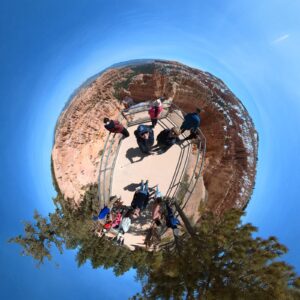 This article builds upon a previous post Helping Team Members Stretch Their Communication Muscles: Kantor Four Player Model. That post covers the model in detail, but here’s a quick recap.
This article builds upon a previous post Helping Team Members Stretch Their Communication Muscles: Kantor Four Player Model. That post covers the model in detail, but here’s a quick recap.
Kantor identified four roles that are necessary for healthy team communication and decision-making. No role is “better” than another; a vibrant team relies on having all of the roles represented, and folks may shift between the roles fluidly:
- Mover – Initiates ideas and action. Without Movers, there is no direction.
- Follower – Supports and builds on ideas. Without Followers, there is no completion.
- Opposer – Questions and challenges assumptions. Without Opposers, there is no correction.
- Bystander – Observes and provides perspective. Without Bystanders, there is no reflection.
I’m guessing you can spot these roles instantly, and you know folks’ defaults: Sarah jumps in with new ideas (classic Mover). Tom builds on everything (reliable Follower). Maria asks tough questions (predictable Opposer). Jake sits back, occasionally dropping wisdom bombs (textbook Bystander).
Maybe you’ve shared the framework with your team and run the Kantor “Four Player Model” Retrospective Exercise. Everyone nods when someone says, “We need more opposition energy.”
But you have a nagging feeling that things are still getting stuck. Signals you detect include:
- Ideas get shot down before they’re formed
- Good suggestions disappear
- Decisions feel forced
- That team member who dominates? Still dominating…
The missing piece isn’t understanding who plays which role and when—it’s understanding how information moves through your team.
Think of your team as a dynamic, living system within a larger system. Like a natural ecosystem, it has interdependencies, constantly adapts, and produces surprising outcomes—some beneficial, some not.
Communication is the vital force. It’s what allows energy and information to flow, enabling the team to learn together and get better at delivering value.
Diagnosing Ecosystem Imbalance: Reading the Communication Currents
Knowing the Kantor roles is a great first step, but the real power comes from watching how information flows inside the team as well as throughout the network of teams.
There are four communication currents you can look for:
- Direction Current – Introduces new ideas, proposals, initiatives (“What if we tried this?”)
- Building Current – Supports, develops, and expands on ideas (“Yes, and we could also…”)
- Challenge Current – Questions, brings alternatives and constructive pushback (“What could go wrong here?”)
- Reflection Current – Observes patterns, provides meta-commentary (“I notice we keep coming back to…”)
When these four currents flow freely, teams make better decisions, build on strengths, and handle conflict constructively. This effect ripples through the larger organizational ecosystem.
But when one or more currents fall out of balance or get disrupted, a vicious feedback loop forms. This breaks down communication, hurts innovation, makes adaptation difficult, and sends morale into the crapper.
Imbalance shows up as:
- Blocked Currents – New ideas (Direction) immediately get shot down by Challenge (“That won’t work because…”). People stop sharing, and discussions get stuck.
- Turbulent Flow – Direction and Challenge collide destructively. Instead of building or reflecting, everyone’s busy defending or attacking. This often happens when psychological safety is low, making Challenge feel personal rather than constructive.
- Stagnant Pools – Only Building current flows. Everyone agrees (perhaps superficially), Challenge is seen as negative. Ideas don’t get refined by tension, and valuable Reflection might reveal uncomfortable truths nobody wants to face.
- Single Current Dominance – Often, a senior individual (or gasp, you as a leader) carries all the Direction current, and everyone else defaults to Building, just agreeing. Real Challenge happens “underground” in side conversations. Reflection is missing because open discussion is absent.
- Suppression of Voices – Those who naturally bring Challenge don’t speak up, and their valuable perspectives are lost. Psychological safety is crucial for all roles to contribute without fear, particularly Opposers and Bystanders
Any of the above sound familiar? If so, I believe you can shift these patterns without resorting to micromanaging (as tempting as it might be!)
Cultivating a Vibrant Communication Ecosystem Flow
Your role as a leader isn’t to control the flow, but to be a “flow facilitator” or an “ecosystem steward (whisperer?)” and create the conditions for healthy symbiosis to happen.
It will take an iterative, rinse-and-repeat approach: Observe, Nurture, Adapt.
 Step 1: Observe – Flow Diagnostics
Step 1: Observe – Flow Diagnostics
Your superpower as a leader is perspective. You can see the patterns team members might miss while they’re “in the boat on the river”. The first step is simply to observe the flow without trying to fix it immediately.
Use the following “Flow Check” perspectives/questions the next time you’re part of a collaboration session (sync / async, actively participating / observing):
- Direction Flow – Are new ideas coming up? From whom? Is it always the same person, or is it distributed?
- Building Flow – Are ideas being built upon? Is there a “yes, and…” vibe, or do ideas just land flat? Who’s doing the building?
- Challenge Flow – Are assumptions questioned constructively? Is opposition truly heard? Do people feel comfortable challenging ideas?
- Reflection Flow – Is anyone stepping back to notice patterns? Is there real-time learning about the process?
Also, look for “Warning Signs of Unhealthy Flow”:
- Red Flags – The same person is always bringing the same current (flow monopolies); one current immediately kills another (like Direction -> Challenge collision); important stuff is happening in side channels (underground currents); energy drops when certain topics or people speak; there are long periods where only one current is active.
- Yellow Flags – Currents are unevenly distributed (some people never contribute certain things); currents are delayed (like challenge coming hours later on Slack); or currents are weak (ideas, support, questions are tentative).
These diagnostics help you see which currents flow naturally and which need a nudge.
Step 2: Nurture – Creating Conditions for Healthy Flow
Once you see the patterns (clearly or perhaps murkily), you can experiment with nurturing conditions for all currents to flow. This isn’t about controlling, but about enabling. A huge part of this is actively cultivating psychological safety, especially so Opposers and Bystanders feel comfortable contributing their vital perspectives.
Here are techniques to try:
Current Rotation
Teams often fall into patterns when people stick to their own default roles.
To encourage a more intentional practice, you could prompt currents for specific parts of a discussion as an experiment:
- “Maria, you’re great at Challenge, but for this topic, can you help the team focus on Building?”
This stretches both the team’s and the individual’s communication muscles.
Flow Intervention
Sometimes a current is just missing. Have some prompting phrases ready to introduce it gently:
- To start Direction – “What if we approached this differently?” or “Who has a wild idea…”
- To add Building – “That’s an interesting idea… and how could we extend it?…” or “How could we make it stronger..?”
- To bring Challenge – “What could go wrong here?” or “What assumptions are we making?”
- To add Reflection – “Let’s step back and observe…” or “I notice we keep returning to [pattern].”
Focused Retrospective
Teams too often get caught in the day-to-day responsibilities of delivery and don’t take the time to pause and consider how they are communicating. Provide a structured time for the team to step back, observe their interaction patterns, and plan small, actionable experiments to improve their communication current flows.
- Use the “Flow Check” questions and “Warning Signs of Unhealthy Flow” from Step 1 as prompts for discussion
- Ask the team: “What communication currents felt strong this week? Weak? Where did we get stuck?”
- Explore specific instances of Blocked, Turbulent, or Stagnant flow
- You can adapt various retrospective formats to this focus, such as “What went well, what didn’t go well, what should we do differently next time?” but specifically applied to communication
Step 3: Adapt – Leadership Flow
Your team is a living system – it will evolve. Your leadership needs to adapt, too.
- Reading Energy Currents – Communication isn’t just about the content, but the energy. High-energy flow is great for brainstorming; low-energy flow is better for complex decisions. Match your interventions to the team’s energy level. And it’s sometimes necessary to nudge things up or down…
- Adaptive Leadership – Continuously adapt your approach as the team changes.
- Recovery Protocols – When communication really breaks down (and it will), have ways to recover. Stop the conversation, name what’s happening (“Our currents are colliding destructively”), return to Reflection (“What’s really going on?”). Restart with explicit current intentions. Post-conflict, use Building and gentle Challenge currents to rebuild trust.
The Benefits: An Adaptive and Resilient Ecosystem
 When you focus on nurturing communication flow within your team’s ecosystem, you enable it to become more adaptive and resilient. You get enhanced information processing, better problem-solving, stronger trust, and increased capacity for the team (and the ecosystem) to keep improving over time.
When you focus on nurturing communication flow within your team’s ecosystem, you enable it to become more adaptive and resilient. You get enhanced information processing, better problem-solving, stronger trust, and increased capacity for the team (and the ecosystem) to keep improving over time.
A healthy communication ecosystem isn’t one without challenge; it’s one that can navigate challenges constructively. High-performing teams aren’t just collections of great individual communicators—they are the teams where information flows most effectively through the entire system.
Key Takeaways:
- Healthy systems balance all four communication currents: Direction, Building, Challenge, and Reflection.
- Psychological safety is essential—especially for Opposers and Bystanders to contribute fully.
- Regularly observe your team’s communication patterns and look for currents that may be blocked or missing.
- Small, intentional interventions can make a big difference over time.
Start at your next team discussion or meeting. Try a Flow Check. Notice which currents are missing, and gently introduce one or two intervention techniques. See what happens. Build upon your experiment. Over time, you’ll help your team enhance their communication flow and enable an adaptive and resilient ecosystem.
Related Posts
Want to read more about team dynamics, conflict, and continuous improvement?
Check out the following:
- Helping Team Members Stretch Their Communication Muscles: Kantor Four Player Model
- The Art of Gentle Leadership: Team Dynamics
- The Art of Asking Powerful Questions (Hint: Stop Giving Answers)
- A Field Guide to Team Dynamics and Conflict
- Learning Games: Applied Improv
- Kaizen – The Meaning and Power of Change
- Agile Team Engagement, Health & Happiness Checks
- Retrospective Exercises – A Toolbox
- The Fear and Vulnerability Retrospective
- Team Safety Check Retrospective
- Team Learning Flow: From Frustration to Collaboration
- Lines of Inquiry: Agile Communication and Collaboration
